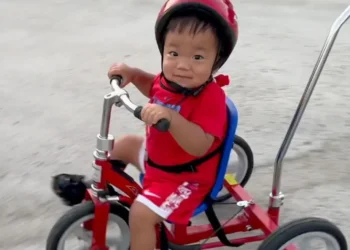No Pain, No Gain? Not Anymore. The Fitness Industry’s New Buzzword Is ‘Recovery’
If you ever stayed up late watching TV in the 2000s, chances are you saw an infomercial for P90X—the intense workout program that promised ripped abs and muscle gains through 90 days of grueling, high-intensity workouts.
So, it may come as a surprise that its creator, Tony Horton, now champions a different message: the power of rest and recovery.
A Shift in Fitness Philosophy
“I didn’t know then what I know now,” says Horton, who spent the 1990s training celebrities. “Back then, it was all about warm-ups, cool-downs, and telling people to eat better.”
His shift in thinking reflects a broader transformation in the fitness industry, moving away from the “no pain, no gain“ mentality that often led to injuries. Today, the focus is on recovery—a key component in achieving long-term fitness success.
The New Formula: Work Hard, Recover Smart
At 66 years old, Horton still maintains an athletic physique but now prioritizes recovery just as much as exercise. His post-workout routine includes:
Deep sleep to allow muscles to repair.
Cold plunges to reduce inflammation.
Foam rolling to ease muscle tension.
Sauna sessions to promote relaxation.
Mindfulness and meditation to support mental recovery.
“If you don’t get the recovery and rest part right, you’ll never be able to stay consistent with the fitness side of things,” Horton explains.
A More Holistic Approach to Exercise
The fitness industry is now catching up with research-backed evidence on recovery. Organizations like the American College of Sports Medicine (ACSM) and the National Academy of Sports Medicine (NASM) have updated their certifications to include recovery techniques, mental well-being, and holistic health.
Stan Kravchenko, founder of the OneFit personal training platform, emphasizes that recovery is not just about taking days off but also optimizing sleep, stress management, and overall lifestyle choices.
“It’s not just about what you do during workouts,” Kravchenko says. “It’s about how you eat, how you sleep, how stressed you are, and even your daily posture at work.”
Pushing Yourself—But Knowing the Limits
While recovery is crucial, some level of discomfort is still necessary for progress. Horton clarifies that while elite athletes might push their limits, not everyone needs to train at extreme levels to see results.
Dr. Michael Zourdos, chair of Exercise Science at Florida Atlantic University, explains that while lifting to failure can help build muscle, it’s not essential for gaining strength. He adds, “There’s a difference between training for health and training for elite performance.”
The key is to recognize the difference between:
Discomfort – a natural part of muscle growth.
Pain – a red flag indicating potential injury.
If you experience sharp pain in your joints, tendons, or muscles, stop immediately.
How Long Should You Rest Between Workouts?
Recovery time depends on your fitness level and goals, but Kravchenko offers general guidelines:
For Weightlifting:
Rest each muscle group for 48 hours before training it again.
Stick to 10 sets per muscle group per week for optimal growth.
Rest 2–3 minutes between sets (rather than the outdated advice of just 1 minute).
Active Recovery Options:
Walking or jogging.
Light yoga and stretching.
Pilates or core exercises.
Any low-impact movement that doesn’t target the same muscles you trained.
Mindfulness: The Missing Piece in Fitness Recovery
One of the biggest shifts in fitness recovery is the recognition of mindfulness as a key factor. Both Horton and Kravchenko highlight that mental well-being impacts physical performance.
A simple morning meditation routine can help manage stress and boost motivation to exercise. Horton even suggests prioritizing mindfulness before committing to a strict workout plan:
“What’s your strategy for getting healthy and staying that way? A lot of it has to do with letting the pendulum swing the other way.”
Final Thoughts: Smarter Fitness, Stronger Results
The “no pain, no gain“ era is fading, replaced by a smarter, more sustainable approach to fitness. Today’s trainers and athletes balance intense training with proper recovery, ensuring better performance, fewer injuries, and long-term results.
So, the next time you think about pushing yourself to the limit, remember: resting smart is just as important as training hard.
Source
This article was rewritten by JournosNews.com based on verified reporting from trusted sources. The content has been independently reviewed, fact-checked, and edited for accuracy, neutrality, tone, and global readability in accordance with Google News and AdSense standards.
All opinions, quotes, or statements from contributors, experts, or sourced organizations do not necessarily reflect the views of JournosNews.com. JournosNews.com maintains full editorial independence from any external funders, sponsors, or organizations.
Stay informed with JournosNews.com — your trusted source for verified global reporting and in-depth analysis. Follow us on Google News, BlueSky, and X for real-time updates.














